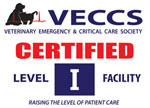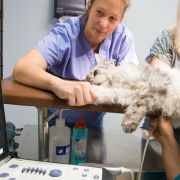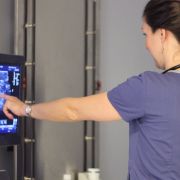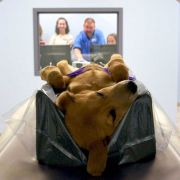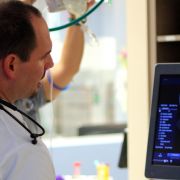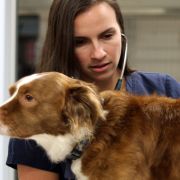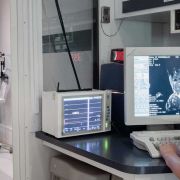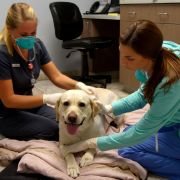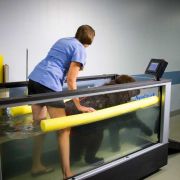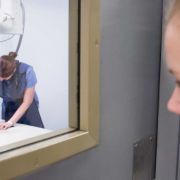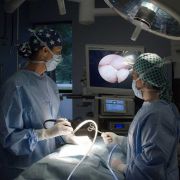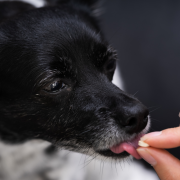Date:
By Alan Green and Rachel Seibert
This month’s case presentation is an example of why thorough and collaborative medical input is so important for successful outcomes. This month’s specialist contributor is Dr. Rachel Seibert. Dr. Seibert is one of CVRCs esteemed board certified surgical specialists. Along with Dr. Sophie Jesty, our board certified cardiologist, you will see how collaboration and expertise allowed this patient to have the best of medical outcomes, in spite of a very complicated and unusual presentation.
Winnie, a young adult female (now spayed) sweet dachshund, was referred to CVRC by her primary care veterinarian for evaluation of an inguinal hernia which had been present since she had been in foster care, but was progressively growing in size. At her first veterinary visit Winnie was found to be heartworm positive and was started on the American Heartworm Society protocol for heartworm treatment. She had completed her course of antibiotics and had received two doses of heartworm preventative prior to being seen at CVRC. Winnie was not showing symptoms of heartworm disease and was otherwise normal at home with a great appetite. At her most recent visit to her veterinarian, x-rays were taken of her abdomen, which revealed multiple immature skeletons within her inguinal hernia. Winnie had been in foster care for approximately six weeks, during which time she had no known access to intact male dogs, but her history prior to this is unknown.
Winnie presented to Dr. Rachel Seibert, DVM, DACVS, at CVRC for evaluation and was confirmed to have a large inguinal hernia and one heartbeat was able to heard within the hernia. She was also found to have two small lumps in the area of her mammary glands, suspected to be mammary masses. X-rays of her chest and a cardiology consultation were performed by Dr. Sophie Jesty DVM, DACVIM (cardiology), to assess the cardiac changes secondary to her heartworm disease and her associated anesthetic risk. She was found to have high blood pressure in her lungs secondary to heartworm disease, for which she was started on a medication prior to anesthesia. Dr. Heather Graham DVM, DACVIM (internal medicine), performed an abdominal/hernia ultrasound, which revealed the uterus in the inguinal canal, which contained one viable fetus and multiple non-viable fetuses. Most likely Winnie’s uterus prolapsed into her hernia early in her gestation period and as the fetuses grew in size, it became entrapped.
Winnie underwent surgery, where her entire right uterine horn and body of her uterus were found to be entrapped into her left inguinal hernia. Two incisions were required to accomplish removal of her uterus and repair of her inguinal hernia. Winnie was found to have four fetuses, all of which were deceased at the time of her surgery entrapped in the hernia. Winnie experienced no anesthetic complications and recovered uneventfully from surgery and was discharged from the hospital the following day. Histopathologic assessment of her excised mammary tumors revealed benign masses. At this time (approximately four weeks) following surgery, Winnie is reported by her foster owner to be back to her usual self at home, with a voracious appetite.



